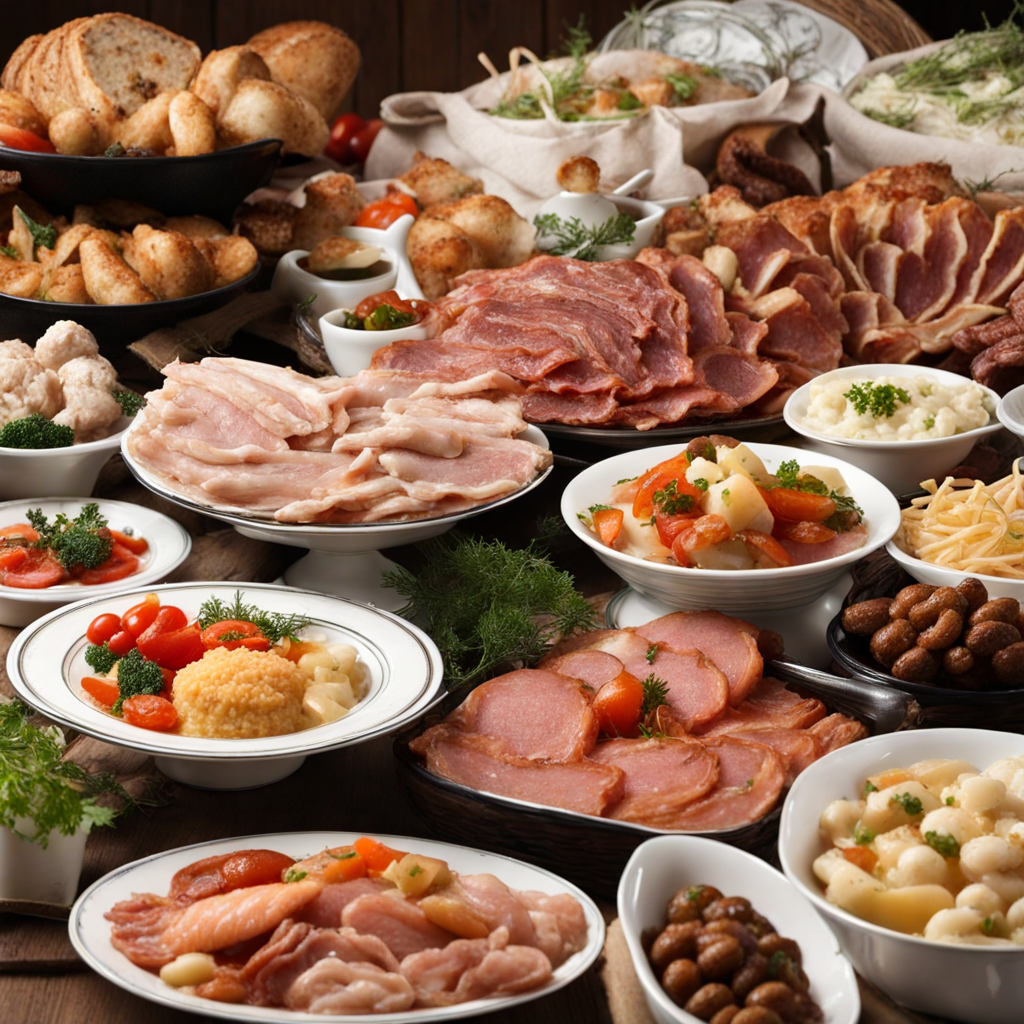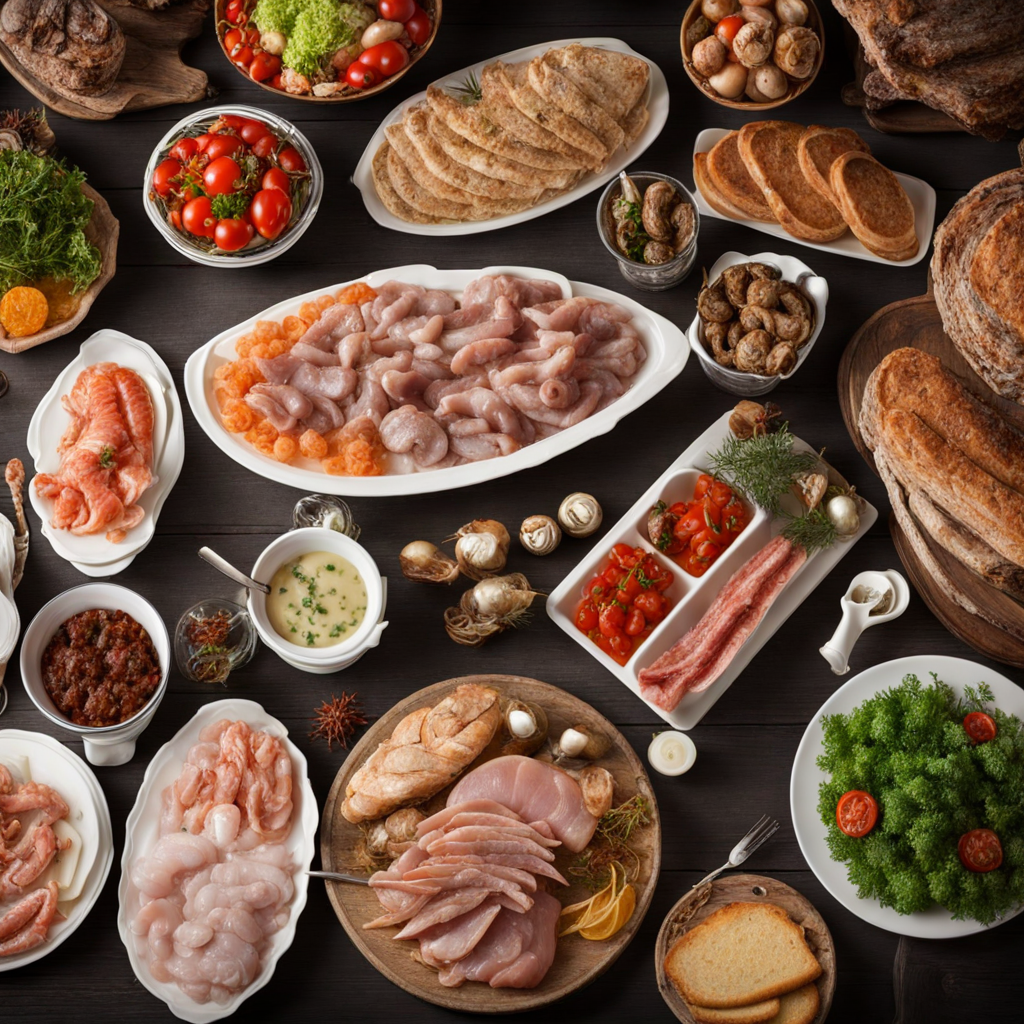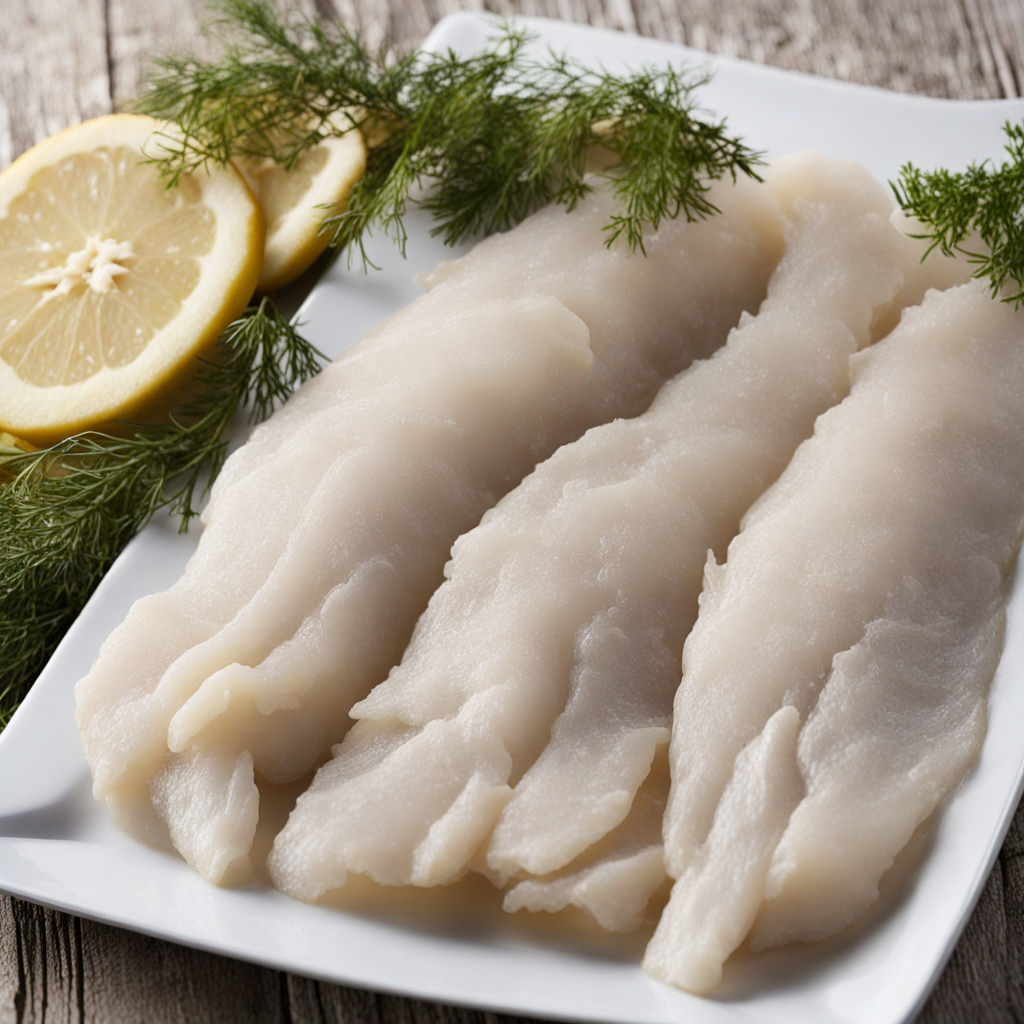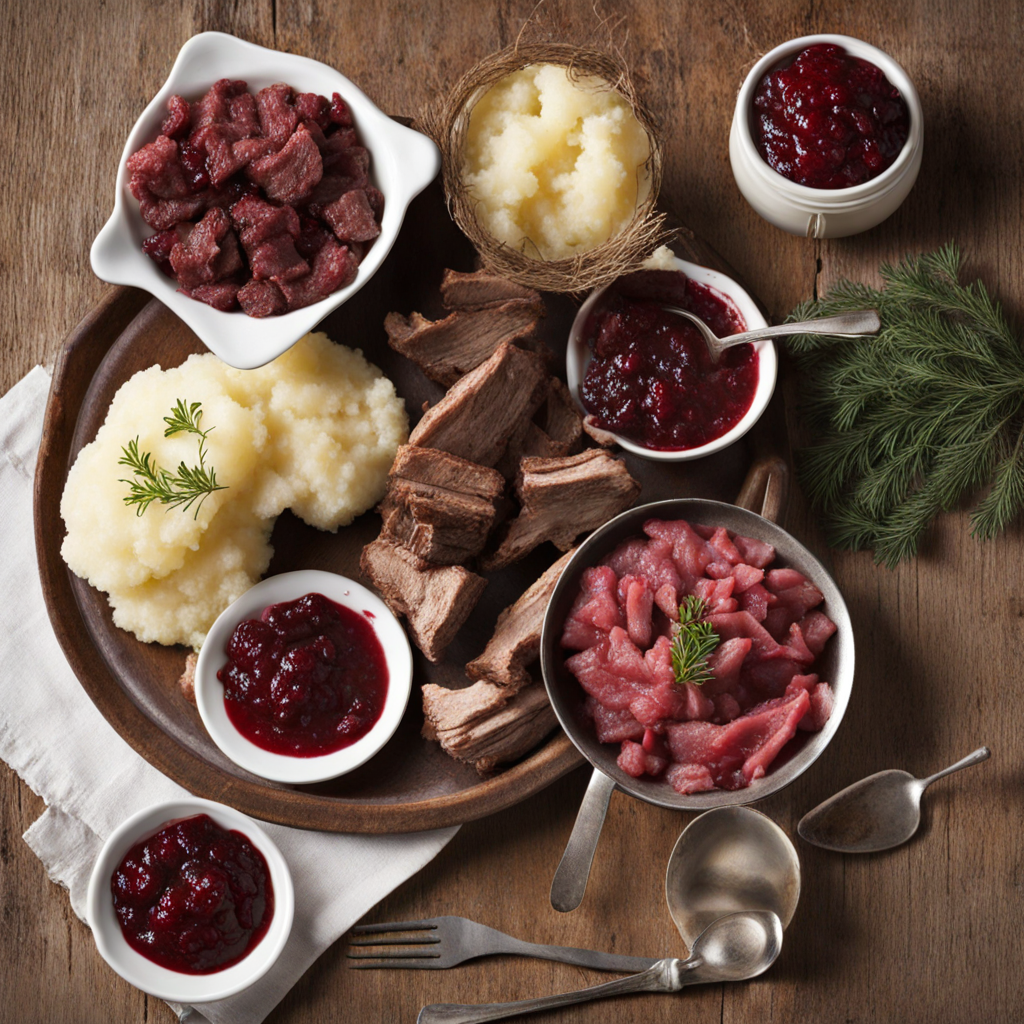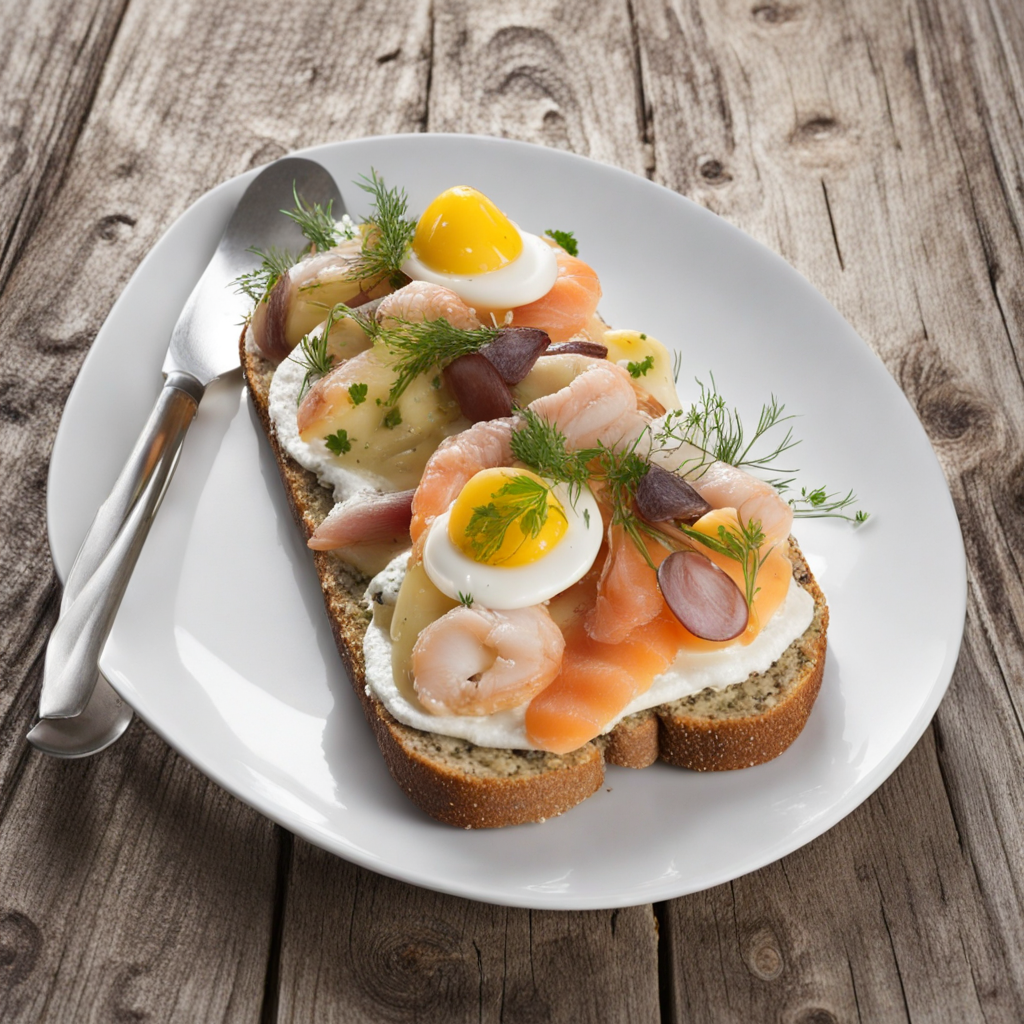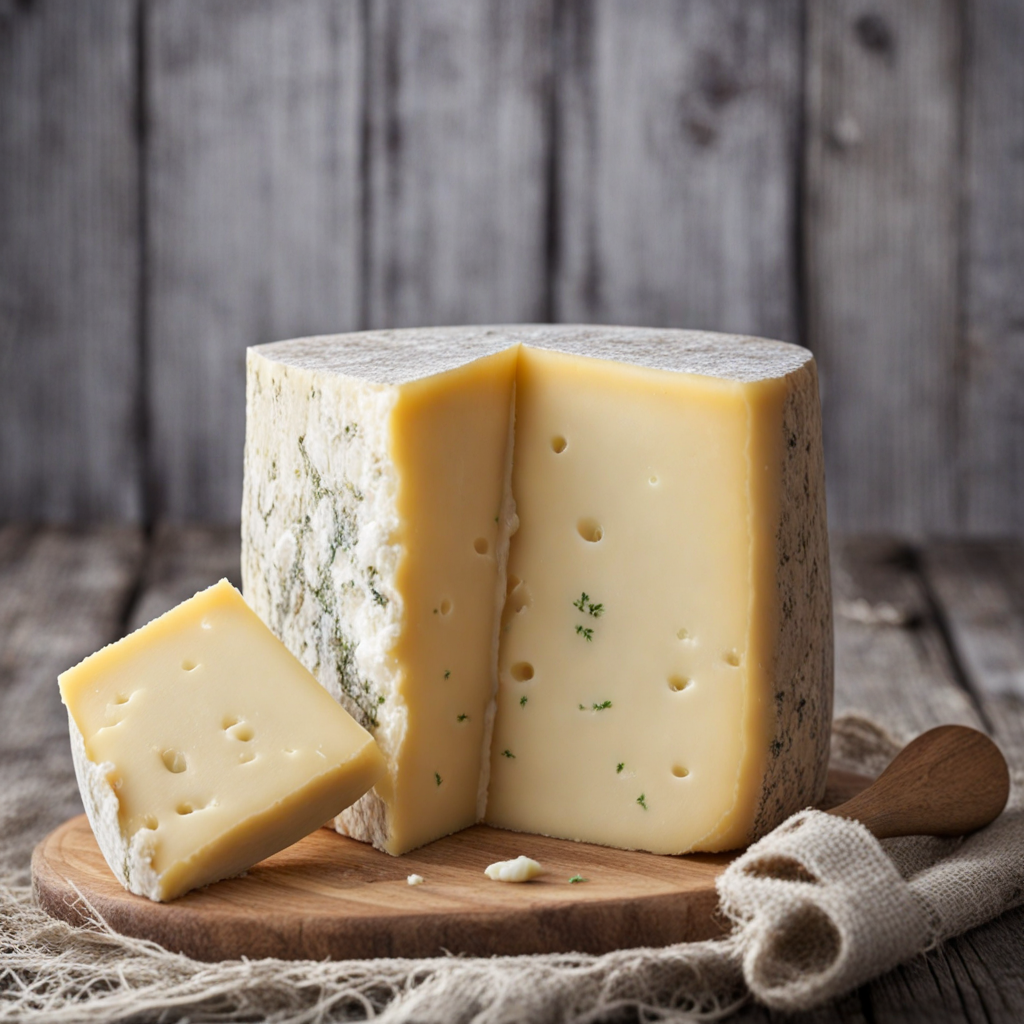Koldtbord
Koldtbord is a traditional Norwegian buffet that showcases a delightful array of cold dishes, reflecting the country’s rich culinary heritage and its reliance on fresh, high-quality ingredients. This vibrant spread typically includes cured meats like salami, hams, and the iconic rakfisk, which is fermented trout. Alongside these proteins, you'll find an assortment of pickled herring, marinated fish, and tangy cheeses, each offering a unique flavor profile that dances on the palate. The presentation is as important as the taste, with ingredients artfully arranged to create a feast for the eyes as well as the stomach. The accompanying sides are just as essential to the Koldtbord experience. Freshly baked bread, often dark and hearty rye or crisp flatbreads, serve as the perfect base for layering flavors. Traditional accompaniments like butter, mustard, and various relishes add depth to each bite, while fresh vegetables such as radishes, cucumbers, and pickled beets bring a refreshing crunch. The combination of textures and tastes—from the creamy richness of the cheeses to the sharp tang of the pickles—creates a harmonious balance that is both satisfying and invigorating. Koldtbord is not just a meal; it is a social experience deeply rooted in Norwegian culture. Often enjoyed during gatherings and celebrations, this spread encourages sharing and conversation as diners sample a variety of dishes at their leisure. Each bite tells a story of Norway’s natural resources and culinary traditions, inviting newcomers to explore the unique flavors of the region. Whether enjoyed at a festive occasion or a cozy family gathering, Koldtbord represents a true taste of Norway, bringing people together over an abundance of delicious food.
How It Became This Dish
The Story of Koldtbord: A Culinary Tradition of Norway #### Origins of Koldtbord Koldtbord, a term that translates to "cold table," embodies the essence of Norwegian culinary tradition, characterized by a lavish spread of cold dishes. Its roots trace back to the Viking Age, a time when the Norse seafarers engaged in extensive trade and exploration across Europe. The Vikings brought back a variety of ingredients and culinary influences from their voyages, which would later contribute to the development of Koldtbord. As agriculture and livestock farming flourished in Norway, the availability of local ingredients such as fish, meats, dairy, and root vegetables became the foundation of Norwegian cuisine. The practice of preserving food through methods such as smoking, pickling, and curing also played a crucial role, allowing the people to enjoy a diverse selection of dishes year-round, regardless of the harsh climate. #### Cultural Significance Koldtbord is not merely a dining experience; it represents a gathering of family and friends, steeped in tradition and communal spirit. This buffet-style meal is often served during celebrations, holidays, and special occasions, such as weddings, Christmas, and Midsummer. It is a culinary expression of hospitality, where hosts showcase their culinary skills and pride in local ingredients. The Koldtbord spread itself is a reflection of Norway's geography and climate. With a long coastline offering an abundance of seafood, fish such as herring, salmon, and mackerel are staples. Cured meats, including reindeer and lamb, alongside a variety of cheeses, breads, and pickled vegetables, create a colorful and flavorsome tableau that highlights both the simplicity and richness of Norwegian food culture. #### The Components of Koldtbord While Koldtbord can vary greatly from region to region, certain elements are commonly found in most spreads. A classic Koldtbord typically includes: 1. Fish – Herring, often pickled or marinated in various sauces, is a cornerstone of Koldtbord. Other fish such as smoked salmon or cured trout are also prevalent. 2. Meats – A selection of cured meats, such as salami and prosciutto, along with traditional Norwegian lamb and reindeer, provide a hearty element. 3. Cheese – Norway is home to a variety of cheeses, including the caramel-like brown cheese, Gudbrandsdalsost, and other local varieties that complement the meal. 4. Bread – Rye bread, flatbreads, and crispbreads are essential accompaniments, offering texture and flavor to the spread. 5. Vegetables – Pickled vegetables, salads, and root vegetables add color and balance to the meal. 6. Accompaniments – Sauces, relishes, and spreads, often made from local herbs and spices, enhance the flavors of the dishes. The arrangement of Koldtbord is as important as the dishes themselves. The presentation is often vibrant, with an emphasis on variety and abundance, making it a feast for both the eyes and the palate. #### Development Over Time The evolution of Koldtbord is closely tied to the socio-cultural changes in Norwegian society. In the early 20th century, as Norway transitioned from a primarily agrarian society to a more industrialized one, the way food was consumed and celebrated began to change. The rise of the middle class brought about new culinary influences and an appreciation for dining as a social event. The post-World War II era saw a resurgence of interest in traditional foods, as people began to reconnect with their heritage. Koldtbord gained popularity as a nostalgic reminder of family gatherings and communal feasts. The introduction of new ingredients and international flavors further enriched the Koldtbord experience, allowing for creativity and personal expression in its preparation. In contemporary Norway, Koldtbord remains a beloved culinary tradition, but it has also adapted to modern tastes and lifestyles. Chefs and home cooks alike experiment with fusion elements, incorporating global flavors while honoring the essence of the original Koldtbord. The rise of food tourism has also contributed to a renewed interest in traditional Norwegian cuisine, with visitors eager to experience Koldtbord as part of their cultural exploration. #### Koldtbord in Modern Times Today, Koldtbord is not just confined to special occasions; it has become a popular choice for casual gatherings, corporate events, and even holiday parties. Restaurants and catering companies offer Koldtbord as a signature option, showcasing the best of Norwegian cuisine. This adaptability has contributed to its longevity and relevance in a rapidly changing culinary landscape. Moreover, Koldtbord has gained recognition beyond Norway's borders. As global culinary trends shift toward sharing and communal dining experiences, the Koldtbord concept resonates with food lovers around the world. The emphasis on fresh, local ingredients and artisanal preparation aligns with the growing interest in sustainable and ethical eating practices. #### Conclusion Koldtbord stands as a testament to Norway's rich culinary heritage, weaving together history, culture, and community. From its Viking origins to its modern interpretations, Koldtbord encapsulates the spirit of togetherness that is integral to Norwegian life. As it continues to evolve, this cold table reflects the enduring bonds of family and friendship, inviting everyone to gather around and share in the joys of good food and good company. Whether enjoyed in a cozy home or a bustling restaurant, Koldtbord remains a cherished culinary tradition that celebrates the heart and soul of Norway.
You may like
Discover local flavors from Norway


